Dinamo Moskva are one of Russia’s most renowned clubs, having celebrated their 100th birthday only last year. As a result, the way their 2022/23 campaign unravelled was a surprise to many.
Dinamo finished the Russian Premier League (RPL) in ninth place with just 45 points from 36 matches, 25 points adrift of champions Zenit St. Petersburg. Manager Slavisa Jokanovic was sacked towards the end of what was a poor season for a team that finished sixth, seventh and third in the previous three seasons.
Belo-golubye replaced Jokanovic with Marcel Licka, who engineered Orenburg’s promotion in the 2021/22 season before guiding them to a seventh-placed finish in the RPL last season. So far, the decision is proving to be a shrewd one. Dinamo have recorded the joint-fewest losses in the league this term (2) and are only six points behind leaders Krasnodar at the halfway point of the season. They have 32 points in 18 matches, only 13 shy of their record from 2022/23.
Orenburg, meanwhile, have dropped to 14th and are in a relegation scrap.
Dinamo Moskva are currently on course for their best-ever finish since being promoted to the RPL in 2017. Licka has spearheaded an incredible turnaround, but how has he done so? This tactical analysis report will dive into the ways in which the Czechian has tactically moulded Dinamo into a winning team and their best performers this season.
Background
Licka’s feel for the sport comes from his lengthy career as a central midfielder, continuing a trend that has received more attention with the recent success of Xabi Alonso, alongside his prior coaching experience.
He began his footballing journey by playing for the youth teams of FC Grenoble, Berchem Sport, Calais RUFC and Olympique Grande-Synthe before joining FC Baník Ostrava in 1992. After moving through the ranks, Licka made it into Ostrava’s senior team in 1997 and enjoyed a three-and-a-half-year stint with them, recording 13 goals and 10 assists in 87 matches.
He joined Slavia Prague in January 2001 but moved to Chmel Blsany just two months later. From there, Licka largely went through a journeyman career, playing for five clubs in the next six years. His final transfer was in February 2010 as he moved from Spanish side UD Horadada to Kladno back in his home nation. In September of that year, Licka announced his retirement after a club career that saw him play 212 matches, scoring 25 goals and laying out 17 assists.
In 2016, Licka made his return to professional football as an assistant manager at Polish side Radomiak, staying in that position for a year. He then took the same role at Dynamo Brest in Belarus in January 2018 but was promoted to caretaker manager just seven months later following the sacking of Aleksey Shpilevski. In four months in that role, Licka led them to nine wins in 15 matches across competitions, a run that saw the hierarchy name him their manager.
Licka managed Brest from December 2018 to December 2019, guiding them to 26 wins and only a solitary loss in his 33 matches in charge, adding the Belarusian League and Super Cup titles to his resume. The club are currently under their seventh manager since Licka’s departure and have not won a title since then, either.
In August 2020, the Czechian took over the reins at Orenburg a few games into the season. From there on, the team won 24 of its remaining 37 league games to finish second in the table with 94 points. However, Orenburg failed to receive promotion due to deficiencies in their stadium, resulting in the club staying on in the second tier.
Licka chose to stay on with the team and guided them to third place in the league the following season, and this time, they achieved promotion into the RPL. In their first season back in the top tier, Orenburg finished an incredible seventh, just seven points off the top four.
At the end of the season, however, they lost Licka to Dinamo Moskva.
Dinamo Moskva: What’s changed from 2022/23 to 2023/24?
A look at the statistics that Dinamo have put up under Licka suggests that there hasn’t been much difference from last season. As the table below shows, their attacking numbers have largely remained the same, which comes as a surprise given that the most significant impact on his previous teams has been their uptick in scoring.
Dynamo Brest scored 52 goals in 30 league matches during the 2018 season; the following campaign under Licka, that number improved to 70. Similarly, Orenburg scored 28 goals in 30 league games in the 2019/20 season. In Licka’s three seasons in charge, they netted 194 times in 105 league encounters.
However, in the case of Dinamo Moskva, there has only been a marginal improvement. Their expected goals (xG) figure has only gone up by 0.2 per game, while their actual goals scored per game is at almost the same rate as last season (1.63 last season vs. 1.61 this season).
Dinamo’s shots per game have increased quite a bit, with the team attempting more efforts from outside the box this season. However, their long-range attempts have been of decent quality, as they are averaging a marginally higher shot-on-target percentage than last season.
The table above becomes interesting in the type of attacks Belo-golubye have most benefited from. Licka has markedly improved their ability to turn possessions into shots across free-kicks and positional attacks, with a marginal drop-off in that respect in corners. However, their counterattacks per game have gone up to 3.33 from 2.37, with an increase of over 5% in the number of counters resulting in shots.
This is not an identity change but merely shows that Licka has majorly improved one of their strengths from last season, which has directly fed into their excellent run this season.
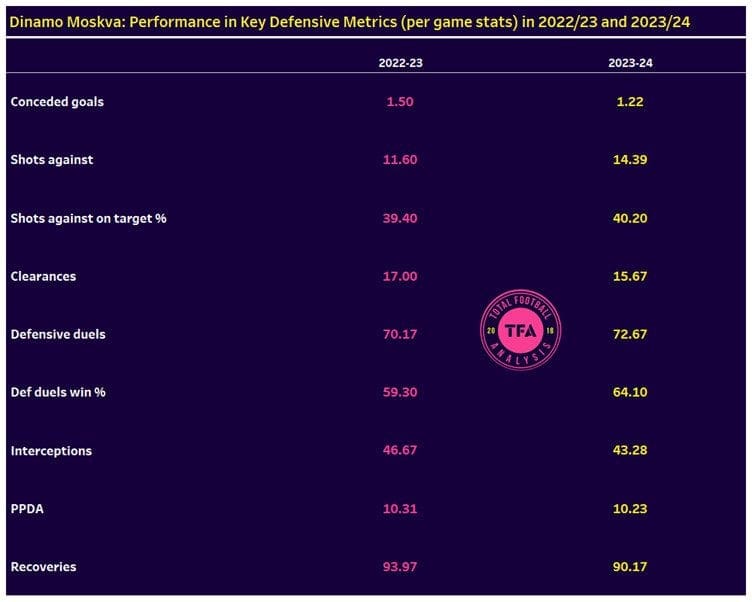
In the meantime, he has also improved their defence, as the table below shows. Dinamo are conceding fewer goals and winning a higher percentage of defensive duels. However, there are questions over how sustainable this is. Their opponents have massively underperformed their xG of 1.81, with goalkeeper Igor Leshchuk (55.3% save percentage, five saves per game) enjoying a solid campaign.
Dinamo’s stats concerning recoveries and interceptions have fallen despite the team maintaining similar possession and passes per defensive action (PPDA) numbers. Should their opponents perform even slightly better on xG, Licka’s men could be in trouble, so an aspect to improve would be their control of games.
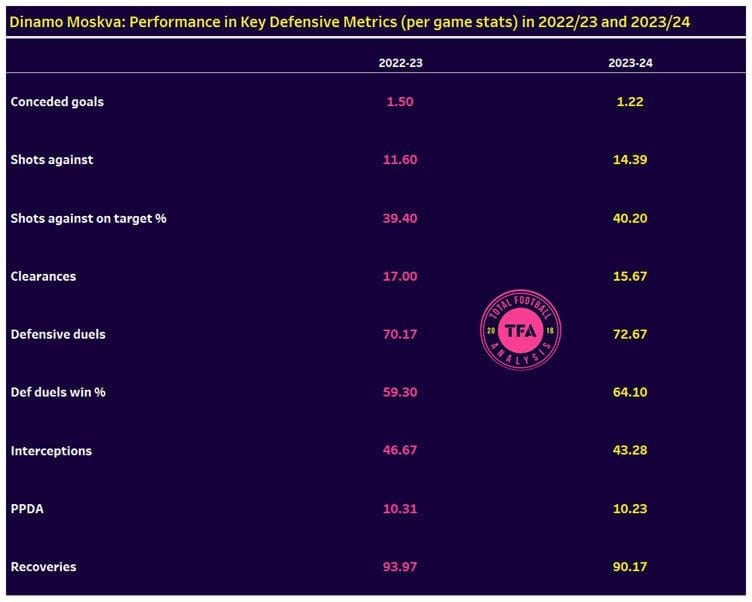
Lastly, Dinamo’s passing has marginally improved this season, particularly on forward and lateral passes. While their crossing has slightly regressed, they are playing more final-third passes at a greater accuracy, while their progressive passing has also gone up quite a bit in volume with a marginal drop in completion rate.
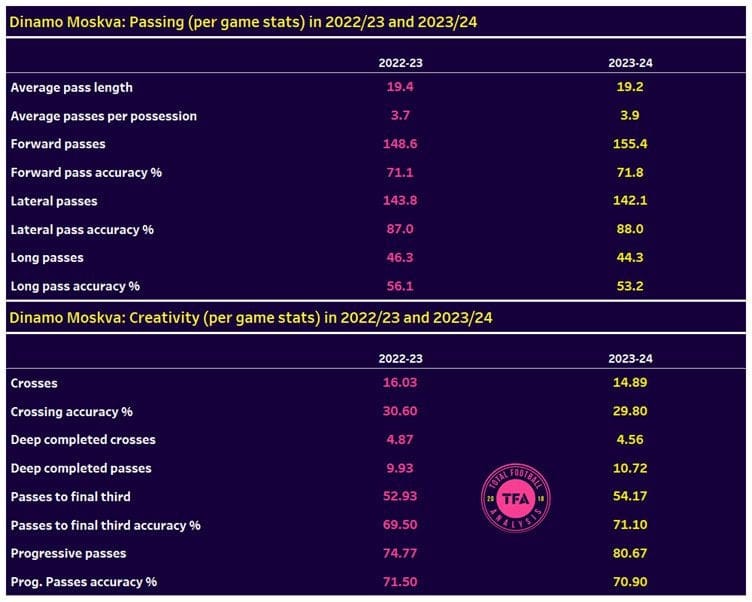
All of these stats give us an idea of where Licka has made improvements in this team. Now, let’s head directly into the changes he has made to their formation and tactical set-up.
Marcel Licka’s vision: Fluency and pace in attack & psychological strength
Formations
Licka has preferred to use a 4-2-3-1 set-up at Dinamo Moskva this season, though he has also occasionally opted for a 4-3-3. What has stood out, though, is that he has used many of his players in positions they are unfamiliar with.
In goal, it has been a coin toss between Leshchuk and Anton Shunin, with the latter returning to the starting XI in their final match before the ongoing winter break after the former featured in seven consecutive RPL outings. Left-back Dmitriy Skopintsev has played in all 18 league games so far, while Roberto Fernandez and former West Ham United defender Fabian Balbuena have been the preferred centre-back pairing. Sergey Parshivlyuk made the right-back spot his own prior to the break, though Eli Dasa has also played there.
Daniil Fomin has been a largely consistent presence in holding midfield and featured in central midfield in a 4-3-3. He has had various partners, including Luis Chávez and Diego Laxalt, a left-back by trade, with the duo even starting a couple of matches together.
Ahead of the two midfielders, numerous players have also undertaken the role of the 10. Fedor Smolov, a centre-forward, has received plenty of game-time in that position, while Jorge Carrascal has also been deployed there. Nicolas Moumi Ngamaleu has been the first-choice left-winger, though he has also featured sparingly on the right. Denis Makarov, Yaroslav Gladyshev, Vyacheslav Grulev and Daniil Lesovoy have all played on both flanks at varying times within games.
Lastly, Konstantin Tyukavin has played all 18 matches as the focal point in attack, though midfielder Bitello and Smolov have also played in that position when required.
Licka has thus managed to bring out good performances from players despite playing them out of position, indicating that he has buy-in from the squad. Alongside that, he also brings tactical expertise and a clear idea of what he wants from his team.
Attack and Chance Creation
A key point of contention for Licka this season has been Dinamo’s mental focus. On multiple occasions after matches, he has referred to his players needing to show a killer instinct and develop psychological strength to put teams away when they are in the ascendancy.
With that on one side, his tactical set-up has been intriguing. Consider the sequence below from their 1-0 win over Rubin Kazan. When the move begins, Dinamo’s full-backs press up and are in virtually the same line as their three midfielders, with the opposition mostly covering those spaces.
A quick pass exchange on the right initially allows the right-back to move forward before finding another pass into midfield. With the defenders now pushing more to the right, two more quick passes help shift the ball to the left-back, who has space to cross. The final product is poor, but the patterns are encouraging.
Dinamo form triangles to pass out from the back, albeit under minimal pressure. At the same time, their ability to shift play to the other side after pulling the defence one way helps them create space for crosses and overload central areas and the box as their forwards can drop back.
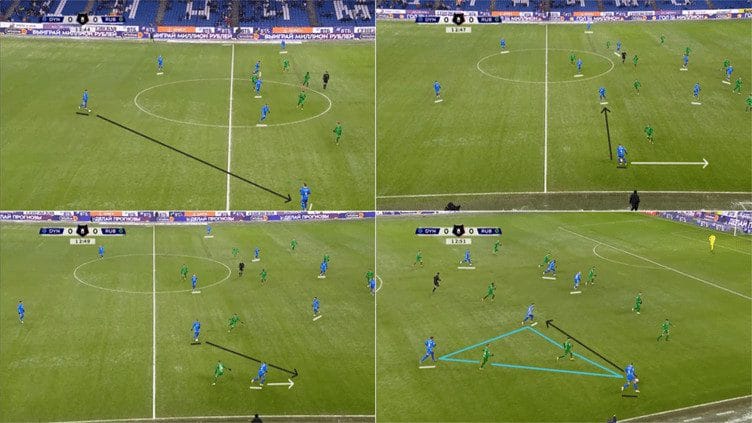
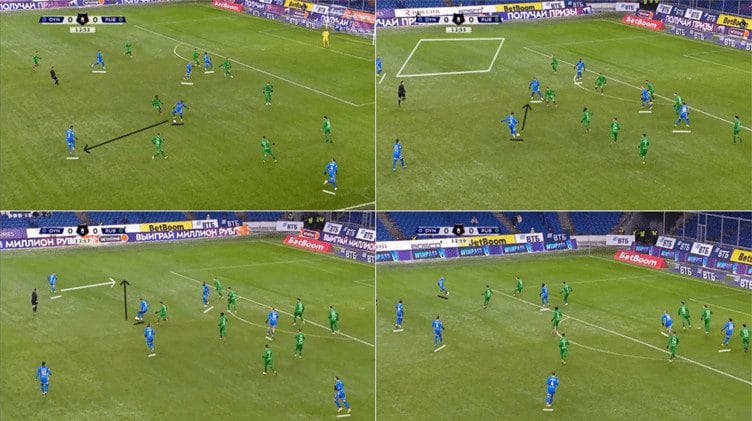
These principles can also be seen below in their match against Fakel, where they played on a poor pitch due to the snow and ice on the turf and against a better press.
The sequence again begins on the right, with a pass played up the pitch before it’s dropped back into midfield. The right-back eventually gets the ball again and passes to a retreating right-winger, who then gives it to the midfielder. From here, we notice the triangles and a similar line of players to what we saw above as the ball is moved to the left.
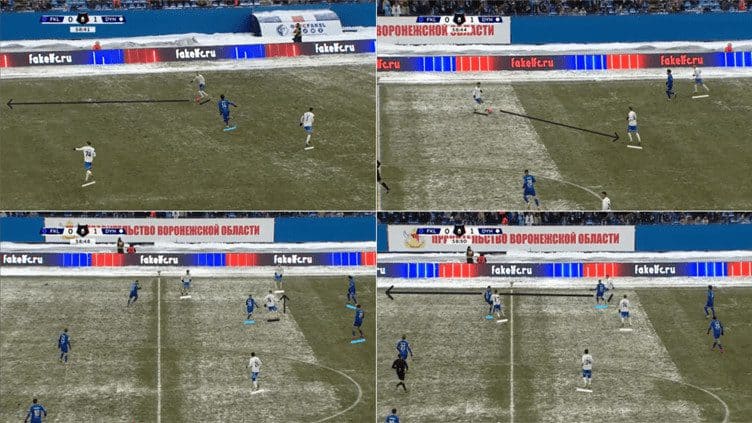
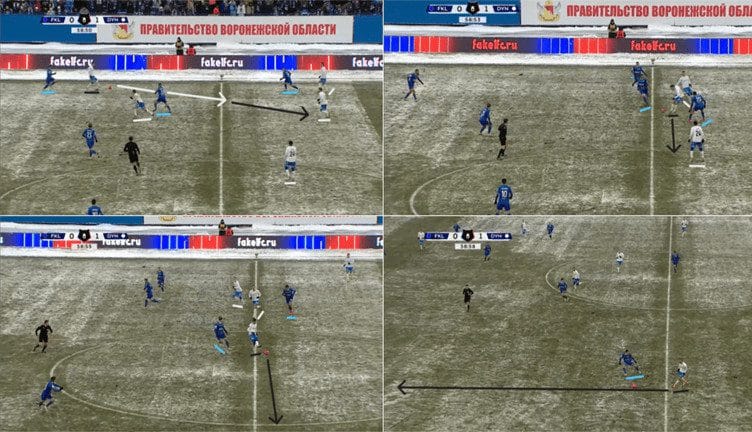
The left-winger then breaks free to feed the centre-forward, who cheekily back-flicks it to a teammate. He then finds a free man on the right with space to exploit. Notice how four players are in a more central area, occupying the entire defensive line, with an additional player on the right. This creates a 5v4 against a defence that now doesn’t know whether to cut down the spaces or leave the players they are marking.
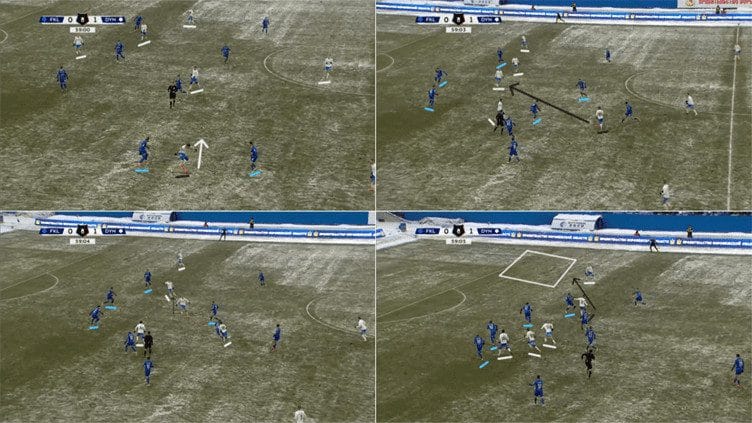
Licka’s attacking system when they have possession is thus predicated on the principles of drawing opponents before switching, as well as one- and two-touch passes that help move the ball into dangerous areas.
The other key component, as highlighted earlier in this report, is their efficiency on the counter. This has largely been due to their alertness to windows of opportunity, such as in this case, where they pick a pass off in midfield before starting off a move that ultimately ends with a shot just over the top.

They do something similar in the clip below from their match against Ural, where a midfielder slides to intercept a pass before receiving it once again, carrying it and playing a delightful reverse pass to Bitello. He then takes his man on and beats him before shooting, scoring via a deflection.
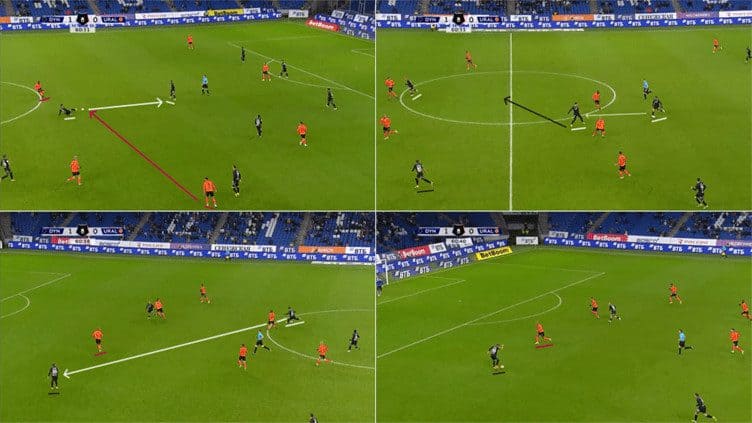
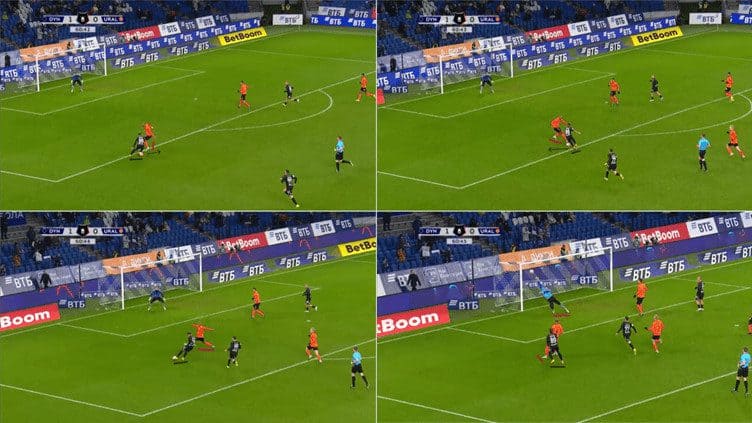
Goalscoring
In Tyukavin, Dinamo Moskva have a budding goalscorer adept at link-up play who can make runs behind the defence. The 21-year-old is a potential star in the making and already has eight goals in 18 RPL games this season, adding four assists to that as well, which means he has contributed to over 40% of Dinamo’s league goals this term.
There were signs of these last season as he scored eight times and assisted twice in 28 games, but Licka’s arrival has propelled his form even further. As his heatmap below shows, Tyukavin impacts play in the entire attacking third while also dropping into attacking and central midfield when the need arises.
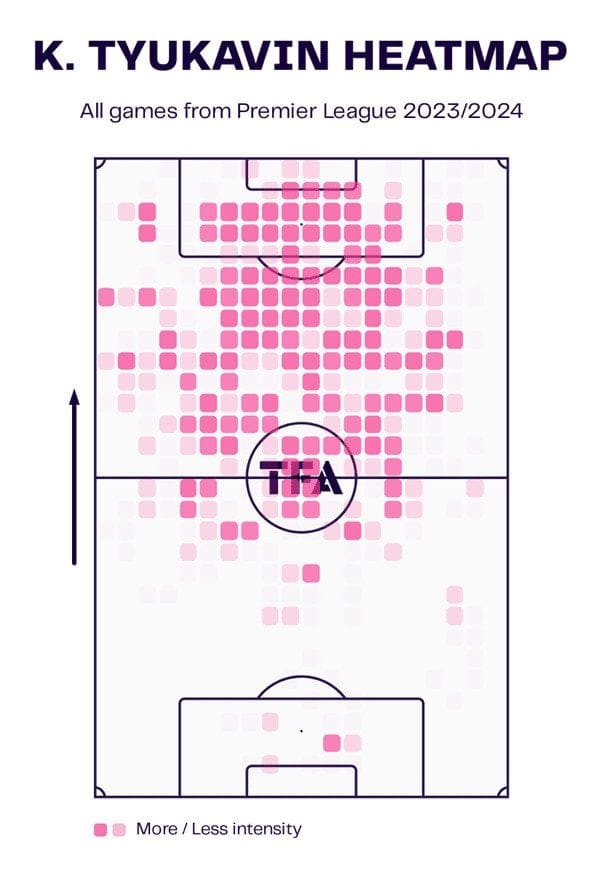
Tyukavin’s winner against Rubin Kazan highlights the best of both his ability in the box as well as Dinamo’s build-up play under Licka. The sequence begins on the left, where a quick pass-and-move sequence gets Skopintsev in behind the defence. He then crosses into the box for Tyukavin, whose movement is excellent, and he chests it home to make it 1-0.
With their passing, Skopintsev and Moumi Ngamaleu bypass four Kazan defenders. Tyukavin, who watches the move develop from close to a defender, curves his run brilliantly to get into a position of maximum opportunity.

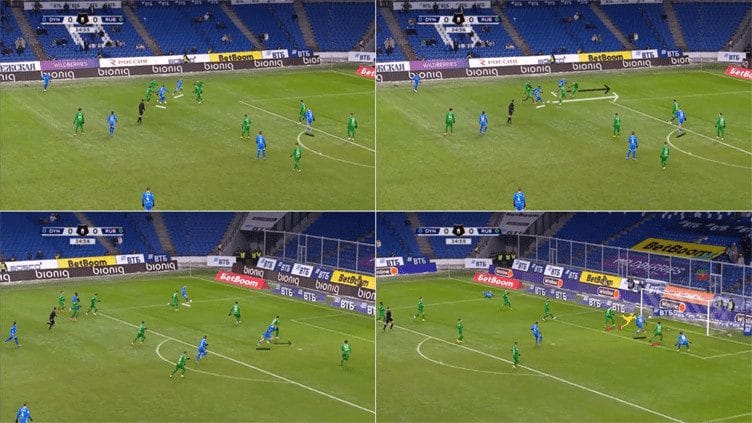
Sometimes, however, Dinamo and Tyukavin don’t need to go through so much to score, as in this goal below from their thrilling 3-3 draw with Sochi. The 21-year-old simply times his run to perfection to meet a ball over the top from centre-back Fernandez brings it down, cuts inside the defender and absolutely thunders the ball home with his left foot.
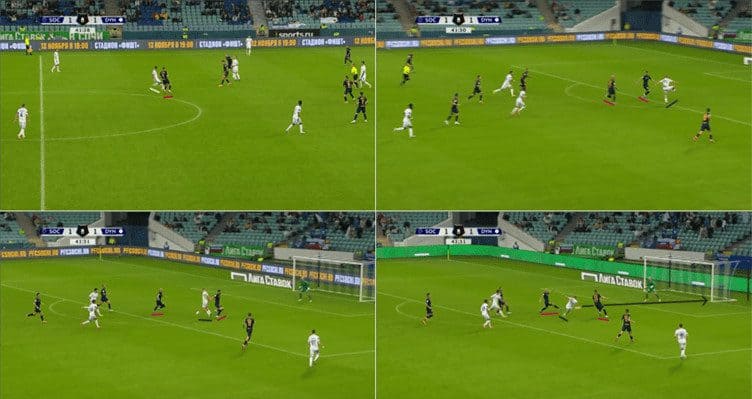
Dinamo’s best player this season in attack after Tyukavin has arguably been summer arrival Bitello. The 24-year-old Brazilian has played only 11 league games so far but has scored three goals already. He has brought versatility to Licka’s outfit, featuring as an attacking midfielder and on the left wing when his team needed it.
Bitello has often made late runs from the midfield position to support the attack, which has proved particularly effective on the counterattack, such as in the example below from their 3-2 derby win over CSKA Moskva.
Dinamo win the ball in their own half here, and the ball is played to Tyukavin, who lays it off first-time for Laxalt. The latter then looks up to spot Bitello starting his run from the left and plays a precise ball over the top, which the midfielder latches onto and easily runs through on goal before slotting home.
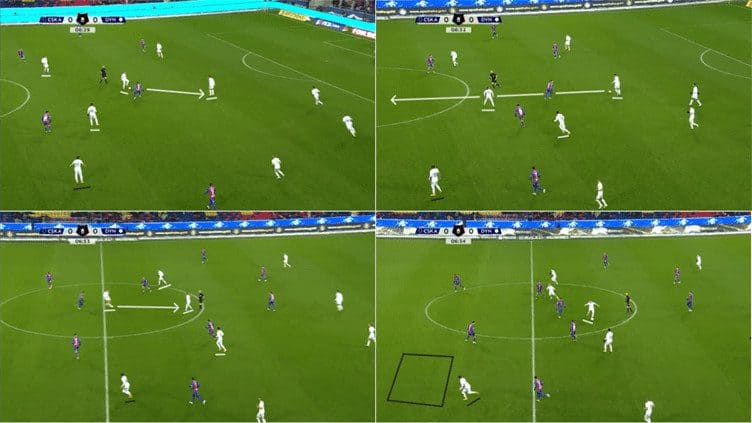
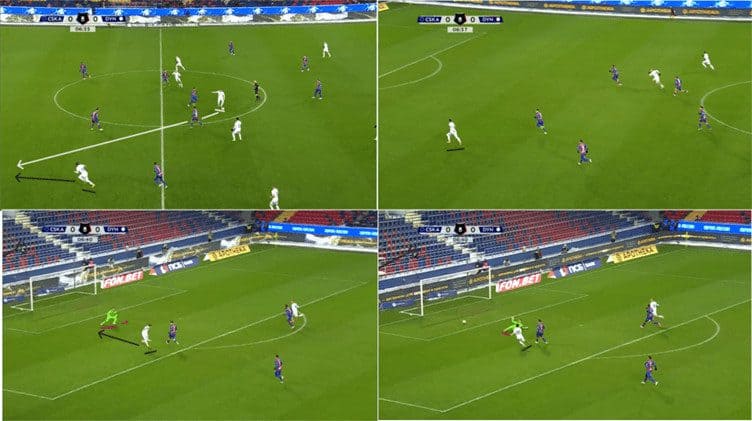
Apart from these two, Smolov has chipped in with four goals, while Makarev has netted thrice. Gladyshev, Moumi Ngamaleu and Chavez have scored two goals each as well.
Dinamo have, thus, really spread the load in attack, combining quality finishing with excellent counterattacking skills to score goals on a consistent basis.
Defensive Shape
As mentioned earlier, Dinamo have improved as a defensive unit via metrics, though they have also been helped by oppositions failing to perform up to expectations. One factor that has contributed to their, at times, shaky defending is the numbers they commit in attack, leaving them exposed at the back.
More interestingly, though, their standout issue has actually been an aspect that has been their strength in attack. They are susceptible to oppositions pulling them to a flank before switching the play, with their occasional lapses in focus not helping their defensive recovery in these situations.
Dinamo have kept only five clean sheets in the league this season. When they have conceded, though, they often struggle to keep it down to just one, as in six of the 13 games they have conceded in, they’ve let in two or more goals. This, too, can be attributed to their lack of focus.
Consider the sequence below from their match against Rubin Kazan. Dinamo don’t press the centre-backs, giving them space to pass. They don’t deploy a high press, with a focus on cutting outlets to midfield. However, Kazan play the pass out to the wing, where there is minimal pressure, before switching the ball, getting themselves space to exploit.
Luckily for Dinamo, the switch is overhit and goes out for a throw-in.
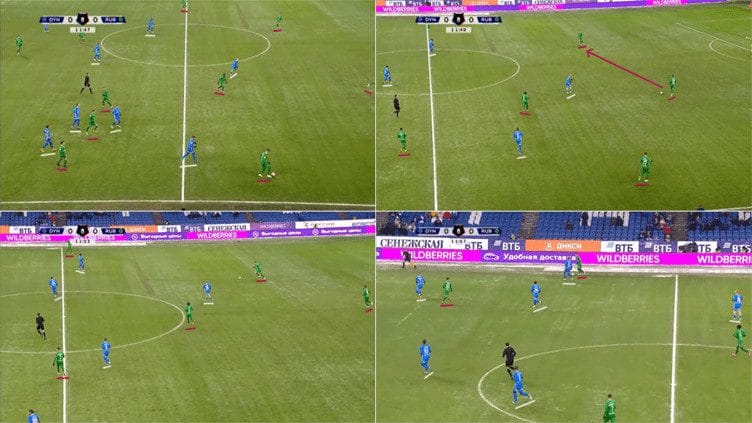
Licka’s emphasis on the lack of focus is also down to some of the errors his side have made defensively. The goal they conceded in their 1-1 draw with Akhmat Grozny exemplifies the same.
Here, the opposition midfielder can play a switch out to the right under no pressure, with Dinamo choosing to defend with a central block. From the right, the attacker can easily dribble past his marker, who sticks a leg out and finds an unmarked teammate in the box. He then has space to easily turn and fire a shot despite four Dinamo players in close vicinity.
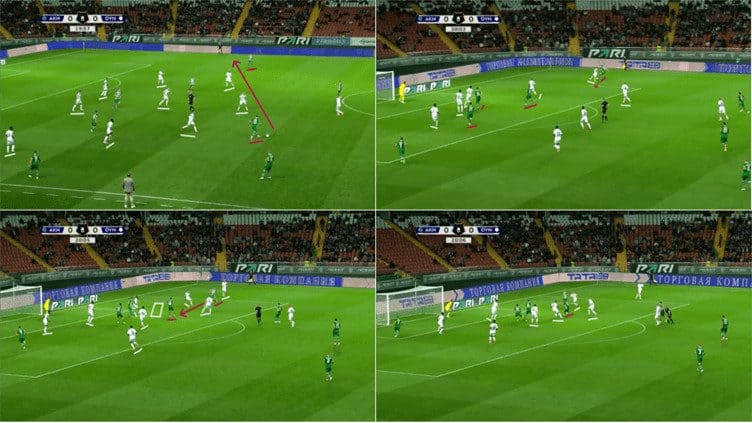
They conceded a similar goal against CSKA Moskva, where their defensive shape is a little awry to begin with. CSKA’s forwards then make a couple of intelligent off-the-ball runs into the box, pulling the defenders one way while the left attacker switches the ball to the right. From there, it’s a simple pass to a player in the box, who is left unmarked. He crosses to the far post, and while the initial header is saved, the rebound is put into the back of the net.
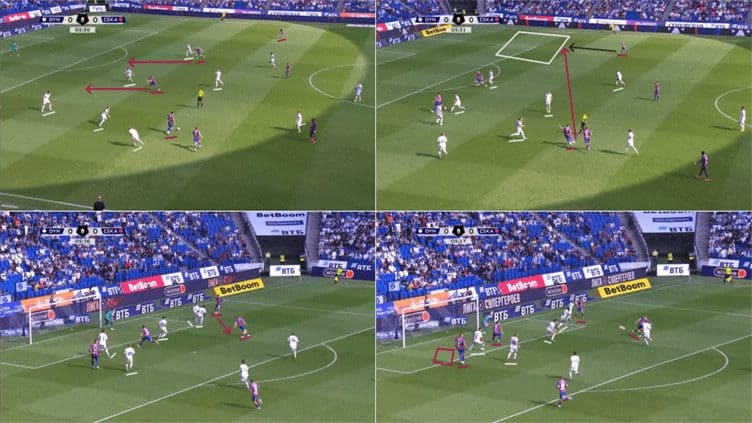
This remains a crucial area for Licka to work on. While his team are conceding fewer goals per game than last season, they continue to have defensive frailties. With more than a month away from competitive RPL action due to the league’s winter break, it will be interesting to see if Licka manages to improve the team in that regard.
Conclusion
Licka has led a remarkable turnaround in Dinamo Moskva’s fortunes this season, helping them climb up the table from what seemed to be a crisis in just half a season. Statistically, their attack has not undergone a major change; however, their attacking patterns and efficiency have certainly improved.
Dinamo’s defence remains a bit of a concern despite some of the underlying stats indicating an improvement. So far, Licka has managed to get his team to outscore opponents on most occasions, but there are questions over how sustainable that is.
Regardless, his body of work at Dinamo Moskva deserves plenty of raise and will undoubtedly be watched by others across Europe.

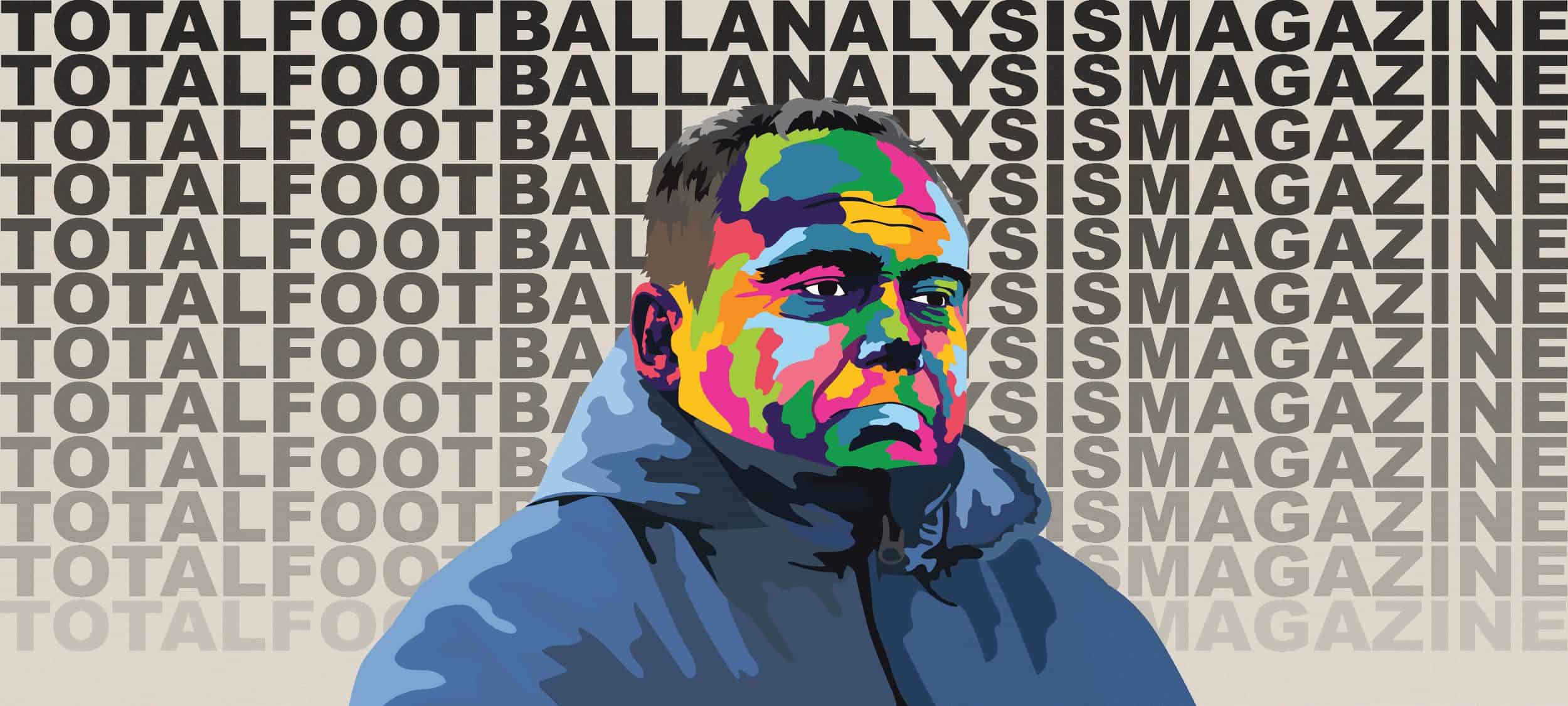



Comments